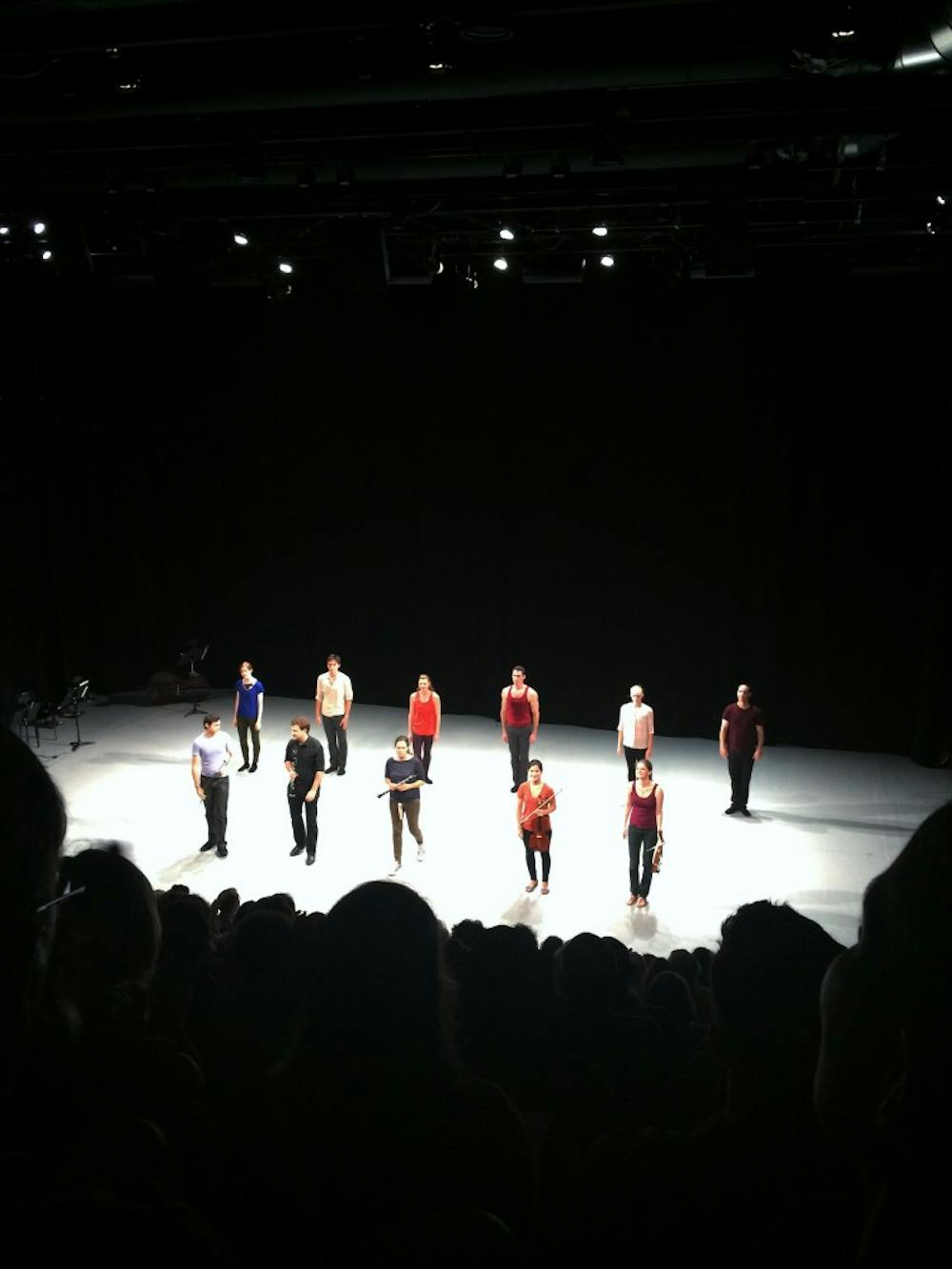In its eighteenth year, the FringeArts festival once again brings together artists from around the world for 17 days of progressive performances throughout Philadelphia. Last weekend I had the pleasure of seeing “What I Learned About Outer Space,” a collaboration between Pennsylvania Ballet, the Curtis Institute of Music and FringeArts. The show is comprised of three pieces: “IanAlexDanielMarriaSamantha,” “Straying Stardust” and my favorite, “Operation.”
I know what you’re thinking: “IanAlexDanielMarriaSamantha” must be a typo. In fact, it’s the show’s opening piece, choreographed by Seattle–based dancer Zoe Scofield. After a slow start, the piece’s heart becomes evident as the dancers—I’ll let you guess their names—perform a story of frustration and growth. Scofield explained, “I pay homage to my past as a ballet student... ‘IanAlexDanielMarriaSamantha’ is a sculptural view through lineage, artifice, coincidence and empathy.” Though I’m not a fan of her title, I couldn’t agree more with this explanation. The dancers create an architectural framework that supports Scofield’s vision while bringing to life her personal story through modern dance.
“Straying Stardust,” the installation’s second piece, is choreographed by Georg Reischl and performed to a specially composed piece of music by Rene Orth. The lights come on, immediately drawing the audience into a chaotic scene of dancers and musicians wandering aimlessly across the stage. Reischl explains: “the dancers will find each other and communicate [in] a language that is purely physical.” I appreciate most that the musicians— often under appreciated—literally take center stage as a physical, moving part of the performance. Dancer and musician cooperate to conduct chaos into sympathetic cohesion.
The show closes with “Operation,” by Itamar Serussi. Less narrative than the show’s other pieces, Serussi’s objective is to evoke and portray pure emotion through the dancers’ individual and collaborative movements. “My intent has been to ask them to experience the work rather than execute it,” Serussi explained. The choreography is compelling, yet the piece’s sheer brilliance is apparent before a single step is taken. Anticipation mounts as the dancers silently take the stage, before a black curtain at its rear opens, revealing a wall of windows looking out onto the Delaware River and Ben Franklin Bridge. In a single moment, the spectacular opening encapsulates the concept underpinning “What I Learned About Outer Space.” The audience embarks on a journey through wonder, inquiry and fantasy—precisely why we go to the theatre in the first place. By opening the curtain and inviting the outside world in, we realize that fantasy—no matter how imaginative—can only exist within reality. “What I Learned About Outer Space” bridges the gap.

